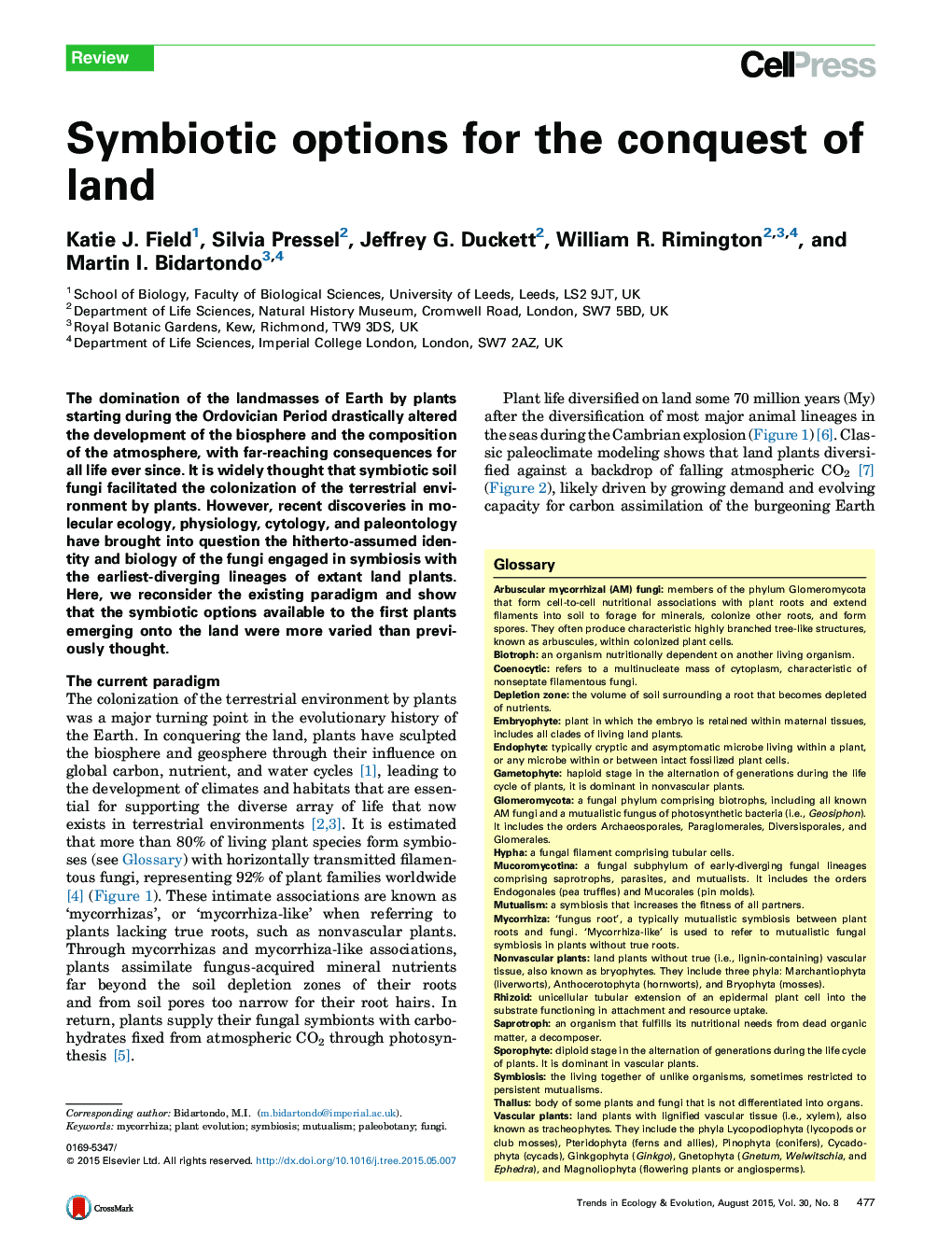| کد مقاله | کد نشریه | سال انتشار | مقاله انگلیسی | نسخه تمام متن |
|---|---|---|---|---|
| 142375 | 163108 | 2015 | 10 صفحه PDF | دانلود رایگان |
• Plant terrestrialization involved establishing mutualisms with fungi over 450 Mya.
• The discovery of an ancient symbiosis challenges a decades-old paradigm.
• Function, signaling, and regulation of plant–microbe symbioses are being unraveled.
• Conquering land relied on a variety of symbiotic strategies still at work today.
The domination of the landmasses of Earth by plants starting during the Ordovician Period drastically altered the development of the biosphere and the composition of the atmosphere, with far-reaching consequences for all life ever since. It is widely thought that symbiotic soil fungi facilitated the colonization of the terrestrial environment by plants. However, recent discoveries in molecular ecology, physiology, cytology, and paleontology have brought into question the hitherto-assumed identity and biology of the fungi engaged in symbiosis with the earliest-diverging lineages of extant land plants. Here, we reconsider the existing paradigm and show that the symbiotic options available to the first plants emerging onto the land were more varied than previously thought.
Journal: - Volume 30, Issue 8, August 2015, Pages 477–486
